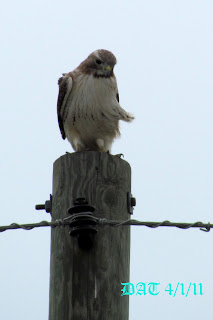About a month ago I promised an update on the recently discovered nest, now known as nest two. Yes, three hawk nests have been discovered on the southeast side of Indianapolis
The first nest, located by Jonathan Renshaw, is in a newer housing addition. This is of some concern as the housing addition still has many open lots near the nest. The nest isn’t located on property belonging to any of the home owners.
Camera: Canon SX30IS
Nest two, the nest I first wrote about a month or so ago, is located les than a mile from nest one. This nest is the only nest that is known to be active as of this date. Looking closely at this image a Red Tailed Hawk can just be seen peering over the edge of the nest.
Camera: Canon SX30IS
Nest three, located less than 1000’ from nest two, was just discovered by me a few days ago while trying to locate nest one. This nest is far off the road in a fenced area which makes it hard to view. I believe this nest could also be active but I need to view the nest with my spotting scope to be sure.
Camera: Canon SX30IS

Red Tailed Hawks have been known to build decoy nests. Bald Eagles will also build more than one nest. I’m not sure what is gained by constructing multiple nests, it seems like allot of extra work for the birds. These extra nests may not go to waste as other birds may use the nest. Great Horned Owls have been known to recycle unused hawk nests. I will be checking these nests over the next few months and reporting here.
Below is a link to a map with the locations of the three southeast side nests.
Southeast side Hawk Nest map
Below is a link to a map with the locations of the three southeast side nests.
Southeast side Hawk Nest map












